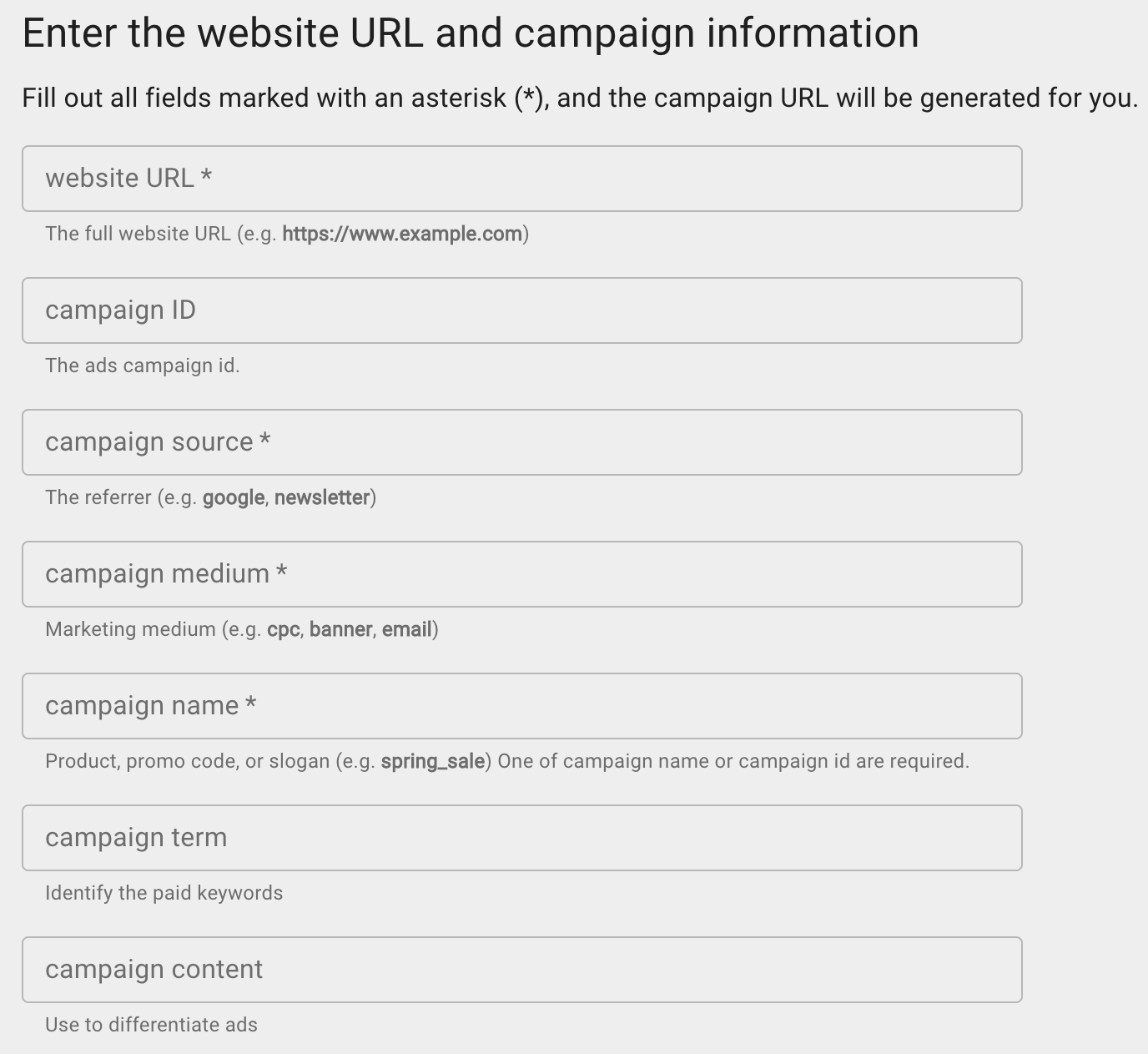Tracking Your Marketing Efforts With UTM Tags
If you are looking to grow your author business, you need a good marketing plan. But you can’t develop a marketing plan unless you track metrics consistently. UTM tracking is a simple way to understand your readers and how they engage with the content you create.
Of course, there are plenty of tools out there to track metrics for platforms like email and social, but what if you wanted to dive deeper into the data to answer specific questions? Like tracking which tweets generated traffic to your author website and which ones failed? Or, understanding which of your brand’s social platforms brought in the most revenue?
Enter UTM Tracking.
What Is UTM Tracking?
“UTM” stands for “Urchin Tracking Module”, and basically it’s just a snippet of code added to the end of a URL that’s used to track and measure the overall effectiveness of a campaign, a specific social media post, email, web page; basically anything you want to track.
While the term sounds technical, maybe even slightly intimidating, UTMs are actually very straightforward, simple, and easier to use than you think.
Here’s an example of what a UTM URL looks like:
Long link, I know. See the part of the URL I highlighted in pink? That’s the UTM part.
Believe it or not, you are no stranger to UTM links. Most people don’t look at the address bar on their internet browser, but when you click on content via social media, email, or a banner of a website, they’re there. UTM URLs are everywhere, and after reading this blog post, you’ll never be able to unsee it.
On a more serious note, by incorporating UTM into your URLs, you can better understand how effective your marketing is and take it to the next level. By implementing UTMs into your marketing strategy, you can get more specific and actionable feedback about your campaigns which you can use to improve performance and in turn, drive more traffic and revenue.
Fun Fact: The name “UTM” comes from the Urchin Software Company, one of the original web analytics software developers. Interestingly enough, Google acquired the company in 2005 to create Google Analytics.
Why Should Authors Use UTM Tracking?
So you might be asking, why? After all, tools like Google Analytics do tell you vital information like which social networks are driving your traffic. But the thing is, Google Analytics only scratches the surface. It tells you which social networks are driving your traffic, but it doesn’t tell you how or why that traffic is coming to you. It doesn’t tell you which CTA button in an email got the most conversions or which post on social media got you more clicks.
With UTM tracking you can get invaluable feedback that can enable you to:
- Better understand which content or campaign resonates with your readers
- Know where your readers are and use the right channels to engage with them
- Measure return on investment from channels like social media and email
- See which paid promotion tactics are working so you can use your budget efficiently
As a side note, other forms of tracking are becoming less reliable with challenges such as third-party cookies and ad blockers; UTM tracking isn’t affected by these changes, just another reason why you should include UTM tracking in your marketing toolkit.
Understanding UTM Tags
There are five types of UTM parameters. Campaign source, campaign medium, campaign name, campaign term, and campaign content. The first three are required parameters in a URL builder, the last two are optional but are used specifically to track paid campaigns.
Campaign Source
Campaign source is all about answering the question: where is my traffic coming from?
For example, I want to share this link on Twitter:
https://example.comSo the parameter added to the URL will look like this:
https://example.com?utm_source=twitterWhat this means is that Twitter is the “source” of my traffic.
Campaign Medium
Campaign medium is all about answering the question: how is this traffic coming to me? You want to know if the traffic is organic (from a search engine), paid (from an ad), from an email, a guest blog, etc., so you know which medium is resonating most with your readers.
Continuing to work with our example from above, since we’re sharing a link on Twitter, I’ll set the medium as ‘social.’
Our URL now looks like this:
https://example.com?utm_source=twitter&utm_medium=socialCampaign Name
The campaign name is all about answering the question: why is this traffic coming to me? You can easily answer the question by giving the campaign a name. Are you launching a new book? You could input a product name. Are you running a contest to promote your author business? Plugin the contest name.
For example, you’re trying to hype up the launch of your new journal by running a 10% off promotion on Twitter. The parameter could look something like this: utm_campaign=launch_10. You can name the campaign anything you want, but make it something simple and easy to remember.
So, using the link we’ve been working with so far, the UTM would look like this:
https://example.com?utm_source=twitter&utm_medium=social&utm_campaign=launch_10Campaign Term
Campaign term is optional but it does come in handy when you’re running paid campaigns because it allows you to track specific keywords.
So, the UTM link would look like this when added:
https://example.com?utm_source=twitter&utm_medium=social&utm_campaign=launch_10&utm_term=example_keywordCampaign Content
Campaign content is also an optional parameter, but it can be very useful for differentiating between ads. For example, if you are tracking different ads within a campaign, or if your content includes multiple links, like an email newsletter with two CTA buttons, this parameter can help you track which link was clicked.
To continue on with this particular example, maybe this is a Twitter ad, and this particular post is a text ad and you’re trying to compare it to another post within this campaign that is a video ad. For this particular post, the UTM code will look like this: utm_content=text_ad.
Putting it all together, the UTM link will look like this:
https://example.com?utm_source=twitter&utm_medium=social&utm_campaign=launch_10&utm_term=example_keyword&utm_content=text_adGoogle Analytics Campaign URL Builder (+ an Example)
While you could build UTM links manually as we did in the last section, it’s tedious and prone to human error. And who’s got time for that? No one. That’s exactly why URL builders exist!
URL builder tools simplify UTM creation. All you need to do is plug in the values of each parameter; you can use the tool to create a UTM URL in seconds. There are plenty of nifty URL builders out there, but I personally love using Google’s URL builder which you can find here.
This is what it looks like once you open it up:

As you can see, the URL builder is quite basic: all you have to do is enter the URL and the UTM parameter values. As you enter this information in the form fields, the tool automatically generates your URL. From here, it’s just a question of copying and pasting it where needed.
Let’s walk through using the UTM builder step-by-step:
I’ll create a UTM tag for the Lulu Bookstore to use on a Facebook post about our current promo code.
Determine Which Webpage to Use
This could be a specific landing page for my campaign or a shopping page on the site.
So, an example: I want to send my followers to Lulu’s Bookstore Page:

Add the URL to the Campaign URL Builder

Add Campaign Source, Campaign Medium, and Campaign Name
- Campaign Source: Facebook (I’m putting Facebook in since I’m trying to track a specific Facebook post linking to this page)
- Campaign Medium: Social
- Campaign Name: 111521_unique10 (It’s important to put in the post date and label it with a unique campaign name)
I didn’t include the campaign term or campaign content since this isn’t a paid campaign, but if it was, make sure to input those as well!
Important to Note: Google Analytics is case sensitive, so when you’re typing in your campaign source, campaign medium, and campaign name or any other section here, make sure all characters are lowercase.
This is what it looks like:

The URL for Social Media Sharing

Seriously, that’s it. How long did that take? Maybe 5 seconds max? Make your life easier by using a URL builder like this one.
How to Use UTM URLs to Measure Your Success (What You Can See On Google Analytics)
Okay, so you know what UTM tracking is, why it’s important, the different parameters it has, and how to build it, but this blog post would not be complete without including the most important part: tracking and analyzing your results through Google Analytics! That was the whole point, right? We created those special links to get a deeper insight into our campaigns.
If you already have Google Analytics set up for your site, and you’ve created your UTM tracking URLs and shared them, Google Analytics will begin pulling in information automatically.
Google Analytics can be a bit daunting at first, especially if you’ve never used the platform before, so I’ll navigate it with you step-by-step:
- Log in to a Google Analytics account that’s connected to your website.
- In the desktop view, on the left-hand side of the screen, there is a series of reports. Click on acquisition.

Now, you see a new series of menu items under Acquisition. Click on Campaigns.

Now, click on All Campaigns.
This is where you can view your tracking URLs and you can sort the data by each parameter you’ve plugged into that URL builder.

See? Super easy! Once you create a habit of tagging and tracking your URLs with UTMs, you can start to see where your traffic is coming from and you can optimize your marketing strategy around that data.
A mistake to avoid with UTM tracking: Don’t use UTM tags on internal links! UTM codes are specifically used for tracking data on traffic coming to your website or landing page from external sources such as social profiles or emails. UTM links shouldn’t be used for links within your website. This can actually confuse Google Analytics and can create tracking errors.
Make Better Decisions With UTM Tracking
Adding UTM tracking to your marketing strategy can be one of the best ways to grow your book business. I mean why not use them? In just a matter of seconds, you can get a deeper understanding of everything.
While UTM tracking can be extremely useful both in terms of measuring your results and testing content to improve results, make sure you’re tracking meaningful metrics along the way.
All in all, UTM tracking links help you to build effective campaigns and stop wasting time on ineffective ones.
What are you going to start tracking first?



